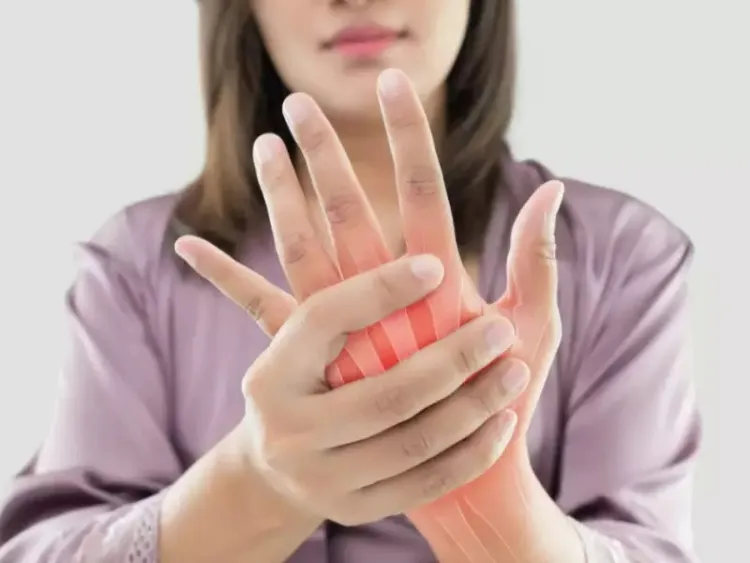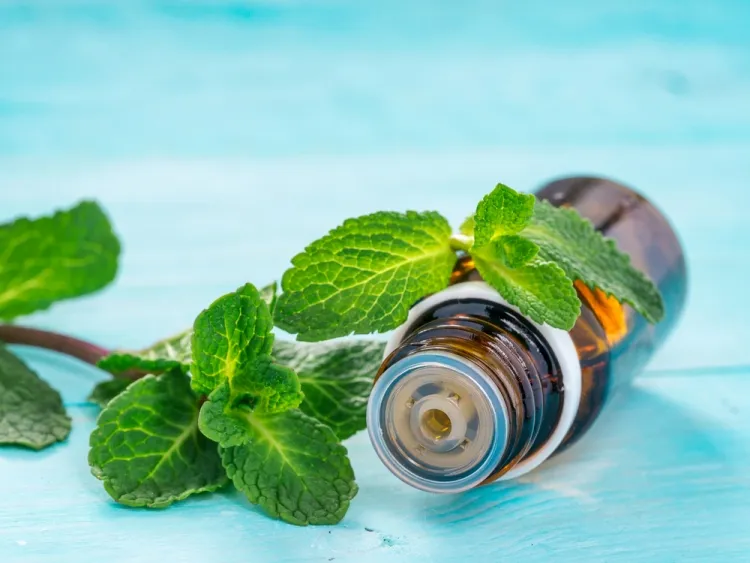If you have a plot of land to be planted, don’t overlook aromatic herbs. They are not only good for cooking. Their presence in your closet is not only in jars, but also in bottles. Essential oils are used to relieve aches and pains: migraines, stomach aches, inflammation. They are used to make herbal teas and infusions, and are part of your beauty routine. Why use peppermint essential oil and should you use it sparingly? We tell you everything to know the benefits and keep in mind the potential dangers.
How Is Peppermint Essential Oil Obtained?

Historical sources don’t tell us who first came up with the idea of using aromatic plants for their olfactory and medicinal properties. Egyptian papyri bear witness to the fact that leaves, stems, bulbs, seeds and roots were used to embalm the bodies of the dead and also to relieve and cure a number of ailments and diseases. Over time, the ancients expanded the use of plants for therapeutic and cosmetic purposes. They experimented with three methods for extracting essential oils: maceration, enfleurage and distillation. Ancient and modern, these ways of exploiting aromatic plants aim at only one thing: Health. In the service of human beings, based on age-old experience and modern science, phytotherapy discovers the power of substances derived from plants. Their widespread use is creating hope for those who want to lose weight naturally. Without changing the original composition of the plant raw material, a physical process is used to produce essential oils. Why essential? Because it is the essence, the nature that we extract from the plant. This final product which concentrates the therapeutic properties must be used according to the prescriptions of experts in herbal medicine, aromatherapy, pharmacology, and never at random, without taking precautions. In the lines below, we will raise the curtain on the benefits of peppermint essential oil, but also on the dangers of overdose.
What’s the Difference Between Spearmint and Peppermint?

Since mint varieties are so many, we need to be more specific. Some are used in cooking for their culinary properties, others are preferred for therapeutic purposes and some are only used for topical application. Where to find peppermint essential oil? Given its strong aroma of menthol and its strong and pungent taste, this extract is rather classified among the products for therapeutic use. Mentha piperita or peppermint has the following profile: its height is about 20 inches/50 cm, the color of its leaves is dark green, they have an elongated and serrated shape, its nature is invasive. Blooming from June to September, peppermint can be self-seeding. To make sure you don’t miss out, leave the more vigorous stems to flower and cut the others for use in cooking. If you pull them, they come out easily and you will thus reduce their proliferation. One of peppermint’s great assets is its drought resistance.
Can you make your own peppermint essential oil? Yes, of course, if you insist on organic production. Used either topically or in aromatherapy, the extract relieves headaches, muscular and joint pain, and itching. It can also be used to treat respiratory problems and reduce stress.
How to Make Infused or Essential Peppermint Oil?

If you want to make an infused product, keep in mind that fresh leaves contain more water than dried leaves, so double the amount. Also, recently cut leaves should be crushed and if dry, they should be crumbled. Choose a carrier oil, such as coconut or grapeseed oil. Heat the oil without exceeding 100°F/38°C. Immerse the leaves in a jar and wait for at least two weeks. The longer it stays, the more potent the infusion becomes. Strain and store in a bottle for up to a year.
Peppermint essential oil is made by the distillation method. On a small scale, you’ll need a pot in which the plant’s leaves are immersed in enough water for the boiling process to stop before evaporation. Keep on low heat. You need 30 minutes during which you collect the steam in a jar put in the pot. You need 30 minutes during which you collect the steam in a jar placed in the pot. After condensation, the steam sinks to the bottom and cools. Filter the leaves through a sieve to obtain a clear extract. If the result is not satisfactory, repeat the process. Store, label with date and keep in a cool, dark place.
How to Use Peppermint Essential Oil?

Let’s start with the benefits of peppermint scent. It’s so potent that it can influence mood and performance, and energize body and mind.
In the garden, peppermint is not just a pretty plant to grow. Its extract is a versatile substance with a wide range of uses. The strong, uplifting scent of the herb is a welcome addition to most cleaning products, especially ones that you make yourself, but it’s not just the scent that’s appealing. Nothing is more effective than the smell of peppermint essential oil to remove bad odors coming from your shoes in the hallway.
Some experts recommend using peppermint essential oil and a little baking soda dissolved in boiling water to clean a smelly drain. Can we get the most out of it given that the extracts are expensive? This is possible if you saturate a cotton ball with peppermint essential oil. Slide it along window sills and door frames, or place it in the bottom of trash cans and on shelves between shoes to keep them from smelling bad.
Is It Safe to Smell Peppermint Oil?
Aromatherapy is a branch of alternative medicine. Aspirated or absorbed through the skin, peppermint oil is used to relieve a cold or relax tired feet. The benefits for the brain and mood are numerous. The aroma calms nervousness, reduces stress, improves memory and enhances consciousness. Home aromatherapy can be as simple as lighting a scented candle or installing a diffuser.
Aromatherapy can be used suppress and reduce nausea in pregnant women, children who cannot tolerate certain medicines and foods, and people undergoing chemotherapy.
Is Peppermint Essential Oil Anti-Inflammatory?

In summer, insect bites can lead to allergic reactions. To relieve itching and skin inflammation, apply peppermint essential oil. Including the extract in an arthritis oil blend is a good idea too. Combined with 44% free menthol, it creates a sensation of heat and cold, and reduces pain. Being a powerful substance, the oil requires caution during use. Overdosing leads to no good, and the same applies to peppermint oil. Even though some essential oils are listed as suitable for ingestion, they are not harmless. On the contrary, they are toxic to varying degrees since they are concentrated forms of the plants they represent. They can damage mucous membranes, the liver and other organs, so dilution is recommended to reduce concentration and avoid contraindications.
Peppermint and Hypertension
People suffering from hypertension and hypotension are often interested in peppermint’s effect on this cardiovascular problem. Menthol, which is the main component of the plant, has a vasodilatory effect, so mint lowers blood pressure. It is not recommended for hypotensive people to abuse the use of products based on this herb. But hypertensives can and should include mint in their diet. Sipping mint tea in hot weather has a positive impact on high blood pressure. To prepare it, you need a teaspoon of dry or freshly crushed leaves and a glass of boiling water. Let the tea steep for fifteen minutes, after which you can drink it. Add honey and a wedge of lemon to soften the pungent taste. Two or three glasses a day are enough to avoid any inconvenience.
Peppermint Potential Risks

Whatever the merits of a drug or product, even a natural one, it can become a contraindication if overdosed. Possible side effects of peppermint oil taken by mouth include heartburn, nausea, abdominal pain, and dry mouth. Rarely, peppermint oil can cause allergic reactions. Capsules containing peppermint oil are often enteric-coated to reduce the risk of heartburn.
The usual dose of peppermint oil for adults and children aged 12 and over is 1 capsule, taken 3 times a day until symptoms disappear. You can increase the dose to 2 capsules, taken 3 times a day, if the result is not satisfactory. The maximum period of intake should not exceed 2 weeks, unless prescribed by a physician.
